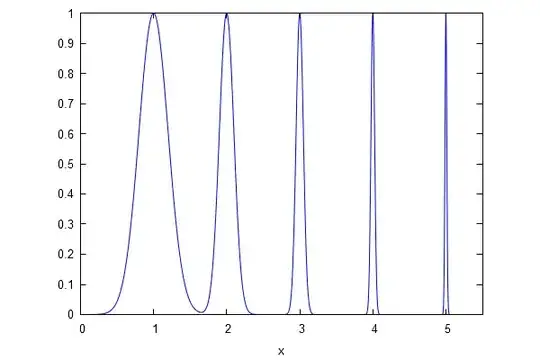There is this following statement which I need to evaluate to be true or false:
Let $f(x) $, $f:\mathbb{R} \rightarrow \mathbb{R_+} $ be a continuous probability density function. Then $\lim_{x\to\infty} f(x) = 0 $.
I understand this is true, because since $ \lim_{x\to\infty} F_X(x) = 1 $ it's necessary that: $$\lim_{x\to\infty} f(x) = \lim_{x\to\infty} \frac{dF_X}{dx} = 0 $$
A friend of mine has proposed an counterxample: you have a triangle with area $1/2$ and height $1$ and, after every unity in $x$ axis, you have another triangle, with area $1/2^n$. Since the height is fixed in $1$, we can say it is a probability density function. It is also continuous, except for a countable set of numbers in which it is not continuous (that is, when $\lim_{x\to a^-} f(x) = 0 $ and $\lim_{x\to a^+} f(x) = 1 $). He says in this case $f$ doens't necessarily tend to $0$ as $x\to \infty$.
Still, in my point of view, I can say that $\lim_{x\to\infty} f(x) = 0 $ except for a countable set of elements. To me, it's just an example that $\lim_{x\to\infty} f(x) = 0 $, except for a countable set of elements. Does it make sense? Who is right?
Thank you!
